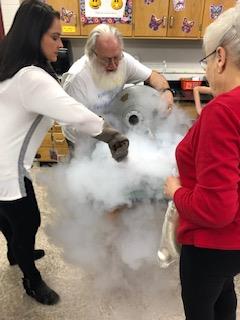Because the kids were a little older than our usual Cool Science students we were able to show them a couple of more advanced demonstrations.
The pictures were provided by their teacher because we have enough to do with the demos.
Here we are considering the range of temperatures that are possible.
From the very coldest at absolute zero (0 Kelvin, -459.666 Fahrenheit, or -273.15 Celsius).
To temperatures we are more familiar with like the freezing point of water (273.15 K, 32 F, or 0 C).
And the boiling point of water (373.15 K, 212 F, or 100 C)
The upper range of temperatures on the chart are the temperatures of the center of the sun or in a thermonuclear explosion (10,000,000 K, 10,000,000 C, or 18,000,000 F)
If you wonder why K and C appear to be equal they actually differ by 273.15 degrees which hardly matters when you are measuring millions of degrees.

Here is the chart with lots more points.
Click on it a couple of times to see an expanded readable version.
Use your back arrow to come come back to this page.

Do you see the balloon Nancy is holding.
She put a few cubic centimeters of liquid nitrogen in a bottle then put the balloon over the neck to catch the gas.
As the liquid nitrogen boils and returns to a gas it expands more than 700 times and inflates the balloon.
Meanwhile I continue with other demonstrations distracting the class from her demonstration.
What do you think the reaction is when it finally pops.
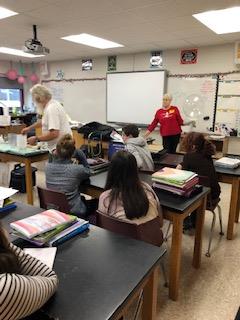

Nancy froze some miniature marshmallows and let the kids try them.
Because the marshmallows are such good insulators their surface very quickly warms up when they touch your tongue so they can be eaten right out of the liquid nitrogen.
Don't try this with fruit or other things that aren't such good insulators.

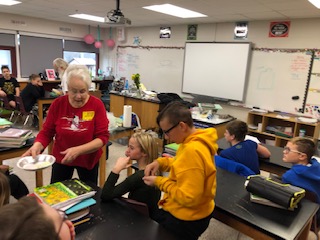
Here I was demonstrating that the resistance of a conductor goes down when it is cooled.
The 200 watt light bulb is barely glowing in the first picture because the electricity is going through a long wire that is wrapped around the cylinder I am holding.
When it is cooled with liquid nitrogen the light glows brightly as expected.
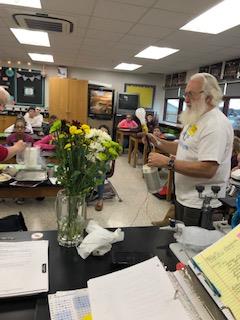

Some materials don't just become better conductors they become perfect conductors when cooled with liquid nitrogen.
That means they lose all resistance and any current flowing in them continues without loss as long as they are kept cold.
A magnet brought near a piece of Yttrium Barium Copper Oxide (Y Ba2 Cu3 O7) Ceramic that has been cooled will induce a current that will create a magnetic field.
That field exactly opposes the field from the magnet so it floats, suspended in the air.
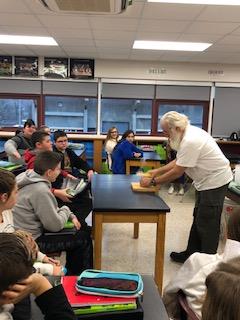
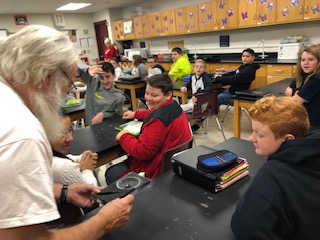
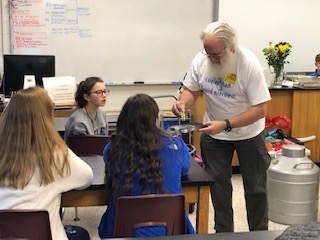
Take some balloon animals and put them in liquid nitrogen and the air inside turns to a liquid and they shrink by 700 times.
Take them out and toss them on the floor and they will grow to their original size.

A chemiluminescent light stick can be turned off by immersing it in liquid nitrogen.
At low temperatures chemical reactions slow down and so no light is emitted.
In fact you can turn off half of one by only cooling one end.

The favorite part of the class is always when we make ice cream in 15 seconds or so.
Somewhere in the cloud of vapor is our bowl of milk, cream, egg whites, sugar, vanilla, and a bit of salt that is rapidly becoming ice cream.
